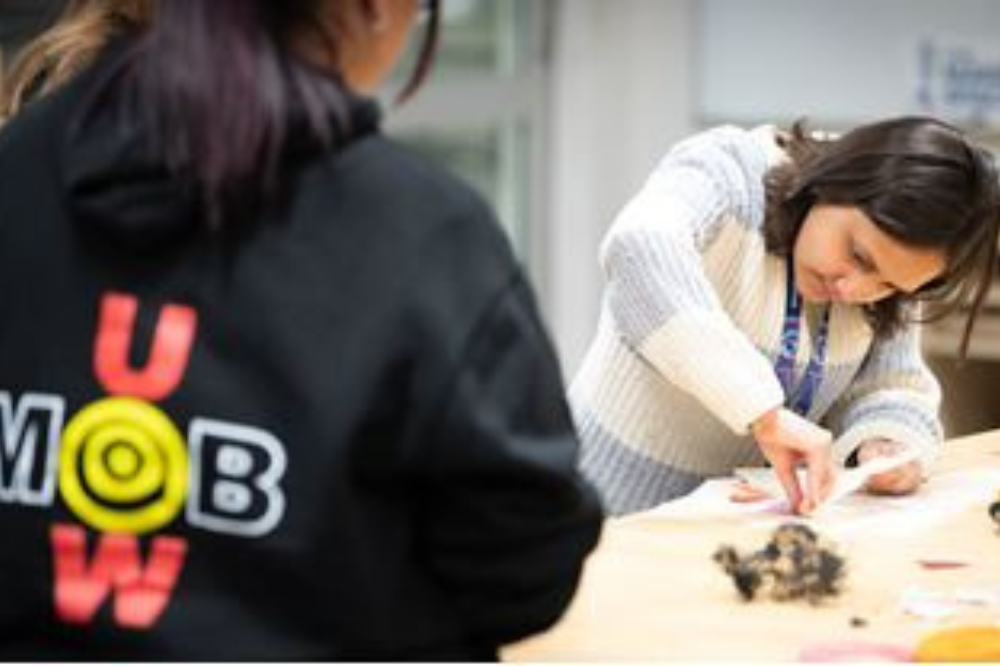
Australia’s national science agency, CSIRO, has bestowed more than half a million dollars to the University of Wollongong (UOW) to enable more Aboriginal and Torres Strait Islander students to pursue a future in STEM.
The CSIRO Indigenous STEM Scholarship was first established in 2019 with the help of a $30,000 gift from the organisation to support two Indigenous STEM students throughout their studies.
The scholarship will now be awarded in perpetuity following a further $500,000 gift from CSIRO.
This is part of CSIRO’s commitment in supporting the pipeline of Aboriginal and Torres Strait Islander talent which saw the agency contribute more than $5m to Indigenous STEM Scholarships this year.
The partnership between CSIRO and UOW will provide one new scholar with $5,000 each year for the duration of their degree. It is aimed at Indigenous students who are undertaking a full-time Science, Technology, Engineering or Mathematics degree.
Zara Button, who is studying a Bachelor of Environmental Science (Honours), was the 2021 recipient of the CSIRO Indigenous STEM Scholarship and said the financial support of the scholarship has enabled her to focus on her future career and her wellbeing.
“The money from the CSIRO scholarship means I have been able to work less and spend more time doing meaningful activities that could further my career or health. It has also given me confidence in myself that my hard efforts are being recognised,” Zara said.
“I would like to thank the CSIRO for donating generous amounts of money to Indigenous STEM students like me. The money goes a long way in supporting my studies and encouraging me to keep going with it.”
Zara highlighted the importance of utilise Indigenous knowledge in all faculties, including in STEM, whether it be in the bushfire research she is involved with, or medicine and other areas.
Dr Chris Bourke, a Gamillaroi man and Director of Indigenous Science and Engagement at CSIRO, said the organisation was delighted to be providing practical support to nurture the next generation of Indigenous STEM superstars.
“Growing an Indigenous STEM pipeline will enable the science and technology sector, and CSIRO in particular, to engage with Indigenous talent, embed Indigenous knowledge and expertise and to foster thriving careers in science and research for Aboriginal and Torres Strait Islander people,” Dr Bourke said.
“These scholarships are a very practical step because we know that adequate financial support for Indigenous university students is a key factor to overcoming barriers to entry and success in higher education.”
Professor Patricia M Davidson, UOW Vice-Chancellor and President, said the partnership between the University and the CSIRO would foster the next generation of Indigenous talent in STEM.
“The CSIRO scholarships will enable students to explore and expand on their interests in STEM, fields that are vital to the future of our communities, our economy and our nation, without fear of financial stress,” Professor Davidson said.
“This significant investment demonstrates the true power of philanthropy, by enriching the lives of Indigenous students and setting them up for a bright and prosperous future.”
Jaymee Beveridge, Vice-President (Indigenous Strategy and Engagement) and Director of Woolyungah Indigenous Centre at UOW, said she was proud to see more financial support for Indigenous students who are interested in forging a career in the thriving industries of STEM.
“I am thrilled that these scholarships from CSIRO will enable UOW to truly support Aboriginal and Torres Strait Islander students to achieve their potential, tackle the big issues of tomorrow, and become the future leaders in the fields of STEM,” Ms Beveridge said.
“Continued partnerships and commitments through scholarships create very real opportunities. They connect students with ongoing projects and research that have a direct effect on our Country, our People and ultimately our future. This investment in our students sends a message that our knowledge and voices are essential in STEM developments.”
This article originally appeared as a media release from the CSIRO.


